Enhancing Fairness in the Allocation of Scarce Resources through AI-Driven Randomization

Abstract: AI-Driven Randomization: Organizations increasingly rely on machine-learning models to allocate scarce resources or opportunities. Despite efforts to ensure fair predictions by reducing bias, structural injustices and inherent uncertainties persist. This study explores how introducing structured randomization into model decisions can improve fairness without sacrificing efficiency, drawing on recent MIT and Northeastern University research. AI-Driven Randomization Introduction: Machine-learning models are widely used to allocate scarce resources, such as screening resumes for job interviews or ranking kidney transplant patients based on survival likelihood. While efforts to reduce bias in model predictions are joint, they often fail to address more profound structural injustices and inherent uncertainties. MIT and Northeastern University researchers propose that structured randomization in model decisions can enhance fairness. This study examines their findings and the potential benefits of this approach. Literature Review: Traditional methods to ensure fairness in machine-learning models involve adjusting decision-making features or calibrating generated scores. However, these techniques often fall short in addressing systemic biases and uncertainties. Recent studies highlight the limitations of deterministic models and suggest that randomization could mitigate these issues by preventing consistent exclusion of deserving individuals. Methodology: The researchers analyzed to demonstrate how randomization can improve fairness, particularly when a model’s decisions involve uncertainty or when the same group consistently receives negative outcomes. They developed a framework to introduce randomization through a weighted lottery, allowing for tailored applications based on specific scenarios. AI Future, AI-Driven Randomization Results: Their analysis revealed that randomization could prevent one deserving individual from being consistently overlooked due to deterministic model rankings. This approach was particularly beneficial when model decisions were uncertain, such as predicting kidney transplant patients’ lifespans. Structured randomization led to fairer outcomes without significantly impacting the model’s efficiency or accuracy. Discussion: The study emphasizes balancing fairness with utility in resource allocation. The researchers utilized statistical uncertainty quantification to determine the appropriate level of randomization for different situations, ensuring that certain decisions incorporated more randomness. They also acknowledged that randomization might not always be suitable, such as in criminal justice contexts, but could be beneficial in areas like college admissions. Conclusion: Introducing structured randomization into machine-learning model decisions can significantly enhance fairness in resource allocation. While the trade-off between fairness and efficiency is relatively small, the extent of randomization should be decided by stakeholders based on the specific context. Future research should explore additional use cases and the broader impact of randomization on competition, prices, and model robustness. Keywords: AI, structured randomization, resource allocation, fairness, bias reduction, machine-learning models, statistical uncertainty. References:
Insights from ant behavior led to a breakthrough in robotic navigation.

Robotic navigation, Abstract: The navigation capabilities of insects, specifically ants, have inspired advancements in the AI algorithms for tiny, autonomous robots. Researchers at TU Delft have utilized biological findings on ant navigation—where ants visually recognize their environment and count their steps to return home safely—to develop an insect-inspired autonomous navigation strategy for lightweight robots. This strategy allows these robots to navigate long distances and return to their starting point with minimal computational and memory requirements. Introduction Insects, particularly ants, exhibit remarkable navigational abilities, often traveling considerable distances from their nests and successfully finding their way back. Understanding these mechanisms is valuable to biology and has profound implications for developing AI systems for small, autonomous robots. TU Delft drone researchers have harnessed these biological insights, specifically how ants use visual recognition of their environment and step counting, to create an autonomous navigation strategy for tiny, lightweight robots. This approach requires minimal computational power and memory (0.65 kilobytes per 100 meters), paving the way for numerous practical applications in the future. The Potential of Tiny Robots Tiny robots, ranging from tens to a few hundred grams, have potential applications in various real-world scenarios. Their lightweight nature ensures safety in case of accidental collisions, and their small size allows them to navigate through narrow spaces. Moreover, suppose these robots can be produced cost-effectively. In that case, they can be deployed in large numbers, enabling rapid coverage of extensive areas, such as greenhouses, for early pest or disease detection. However, the operation of such small robots poses significant challenges due to their limited resources compared to larger robots. Autonomous navigation is particularly problematic, as external infrastructure like GPS is often unavailable or unreliable indoors and in cluttered environments while installing and maintaining indoor beacons is expensive and sometimes impractical. AI systems designed for autonomous navigation are typically tailored for larger robots, such as self-driving cars, which rely on heavy, power-intensive sensors like LiDAR. Due to their size and power requirements, these sensors are unsuitable for tiny robots. Although energy-efficient, alternative approaches using visual sensors often create detailed 3D maps of the environment, necessitating substantial computational and memory resources beyond the capacity of tiny robots. Insect-Inspired Navigation AI, Robotic To overcome these challenges, researchers have turned to nature for inspiration. Insects, particularly ants, are interesting as they navigate significant distances with minimal sensing and computing resources. Biologists have increasingly understood insects’ strategies, combining odometry (tracking their motion) with visually guided behaviors based on their low-resolution yet omnidirectional visual systems. While odometry is well understood, the mechanisms behind view memory are unclear. One early theory, the “snapshot” model, suggests that insects occasionally take visual snapshots of their surroundings, which they later use to navigate by minimizing visual discrepancies between their current view and the snapshot. This snapshot-based navigation can be likened to Hansel and Gretel’s strategy of leaving stones to find their way home. For the robot, snapshots serve as these “stones.” However, the robot must be close enough to the snapshot location for effective navigation. Too many snapshots can lead to excessive memory consumption, while too few can cause the robot to get lost. The innovative aspect of the TU Delft strategy is the integration of odometry with spaced snapshots. This method allows the robot to travel longer distances as it only homes to snapshots occasionally, reducing the need for frequent visual comparisons. This balance minimizes odometry drift while maintaining low memory usage. Robotic Experimental Results The insect-inspired navigation strategy was tested on a 56-gram “CrazyFlie” drone equipped with an omnidirectional camera. The drone successfully navigated distances up to 100 meters, using only 0.65 kilobytes of memory. All visual processing was performed on a micro-controller, a small and inexpensive computer commonly found in various electronic devices. Applications and Future Work The proposed navigation strategy represents a significant step toward deploying tiny autonomous robots in real-world applications. Although the functionality is more limited than state-of-the-art navigation methods—providing only return-to-base capability without generating a map—it is sufficient for many practical uses. For example, drones can track inventory in warehouses or monitor crops in greenhouses, collecting data and returning to a base station for post-processing. This technology’s future potential is vast. As the understanding of insect navigation deepens and computational technologies advance, tiny autonomous robots will become increasingly capable, opening up new possibilities in various industries. Conclusion Insights from ant behavior have enabled significant advancements in the autonomous navigation of tiny robots. TU Delft researchers have developed a navigation strategy requiring minimal computational resources by mimicking how ants use visual snapshots and step counting. This breakthrough could lead to practical applications in numerous fields, enhancing efficiency and safety while minimizing costs. The research represents a promising step in integrating biological principles into robotic technology.
OpenAI’s ‘Project Strawberry’ boosts ChatGPT with web access and problem-solving power.

ChatGPT, OpenAI continuously innovates with multiple teams exploring varied approaches to achieve artificial general intelligence (AGI). Some concepts are more promising than others. A recent Reuters report sheds light on a new project, code-named “Strawberry,” which some experts on X speculate could be an advanced version of the “reasoning mode” Q* revealed through a previous leak. Project Strawberry is believed to be an advanced model or system designed for enhanced reasoning capabilities, including autonomous online information retrieval to solve complex problems. While the specifics remain undisclosed, some speculate this could align with OpenAI CTO Mira Murati’s vision of the next-generation AI possessing intelligence comparable to a PhD holder, potentially marking OpenAI’s progression to ‘level 2’ AGI — the reasoners. According to the Reuters report, derived from internal documents and insider commentary, Strawberry represents a significant leap in AI capabilities. Despite its secrecy within OpenAI, indications suggest that its primary function will be to conduct “deep research” rather than merely addressing simple user queries. Notably, Strawberry could autonomously navigate the internet and gather information, which requires explicit user direction in existing models. While OpenAI has not explicitly confirmed the details of Project Strawberry, they acknowledged their ongoing research into new AI capabilities. The extent to which Strawberry will integrate into ChatGPT or other OpenAI products remains uncertain. However, the research outcomes will likely influence future AI models, possibly contributing to developing GPT-5 or other advanced systems. Project Strawberry could introduce a new paradigm in AI reasoning. AI is inherently capable of complex tasks without requiring extensive fine-tuning. Although concrete details are scarce, OpeOpenAI’s commentary suggests that achieving human-like understanding remains a crucial objective. In conclusion, Project Strawberry symbolizes a significant stride towards sophisticated AI reasoning, potentially transforming future OpenAI models and products and advancing the journey towards AGI.
Smart Cities in 2050: The Role of AI in Shaping the Future
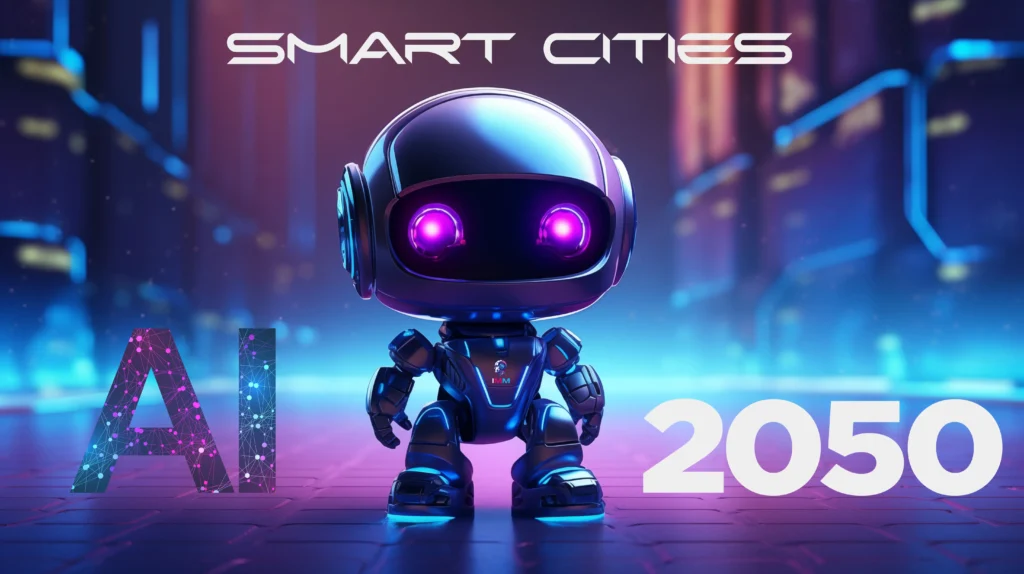
The year 2050 will mark a significant milestone in the evolution of urban living, with Artificial Intelligence (AI) at the forefront of this transformation. Intelligent cities, driven by AI, will offer unprecedented efficiency, sustainability, and quality of life. This blog post delves into AI’s pivotal role in developing smart cities by 2050 and its profound impact on urban environments and their inhabitants. The Backbone of Smart Cities: AI Integration 1. Data-Driven Decision Making AI will be the core engine of smart cities, leveraging vast amounts of data generated by Internet of Things (IoT) devices, social media, public records, and more. AI will analyze this data through advanced machine learning algorithms to provide actionable insights, enabling city planners and administrators to make informed decisions in real-time. This data-driven approach will optimize urban management, from energy consumption to public safety. 2. Predictive Analytics Powered by AI, predictive analytics will allow smart cities to anticipate and address issues before they escalate. For example, AI systems will dynamically predict traffic congestion and adjust traffic signals to prevent bottlenecks. Similarly, predictive infrastructure maintenance will reduce downtime and extend the lifespan of critical urban assets, saving costs and improving reliability. Key AI-Powered Features of Smart Cities 1. Intelligent Transportation Systems Autonomous vehicles (AVs) will be a cornerstone of smart cities, transforming urban mobility. AI will coordinate AVs, ensuring optimal routes, reducing traffic congestion, and enhancing safety. Public transportation will also benefit from AI, with adaptive schedules and routes that respond to real-time demand. This seamless integration of transportation modes will provide efficient, eco-friendly travel options. 2. Smart Energy Management AI will revolutionize energy management in smart cities. AI-enhanced smart grids will balance supply and demand, integrate renewable energy sources, and minimize energy wastage. Buildings will be equipped with AI-driven systems that monitor and adjust energy usage based on occupancy and weather conditions, significantly reducing carbon footprints and operational costs. 3. Healthcare and Well-being AI will play a transformative role in healthcare within smart cities. Wearable health devices and smart home systems will continuously monitor residents’ health, alerting them and healthcare providers to potential issues. AI-driven diagnostics and telemedicine will ensure timely and personalized care, improving health outcomes and reducing the burden on healthcare facilities. Enhancing Public Safety and Security 1. AI Surveillance and Emergency Response AI will significantly enhance public safety. Advanced surveillance systems utilizing AI for facial recognition and behavior analysis will help law enforcement swiftly detect and respond to threats. AI will also streamline emergency response, providing real-time data to first responders and coordinating resources efficiently during crises. 2. Cybersecurity As cities become more connected, cybersecurity will be paramount. AI will be crucial in safeguarding against cyber threats, with intelligent systems continuously monitoring networks, identifying vulnerabilities, and responding to real-time attacks. This proactive approach will protect critical infrastructure and personal data, ensuring the integrity and trustworthiness of innovative city ecosystems. AI and Citizen Engagement 1. Personalized Services AI will enable cities to offer personalized services to residents, enhancing their quality of life. From tailored public services to customized healthcare plans, AI will ensure that the needs of each individual are met efficiently. This personalized approach will foster greater satisfaction and engagement among city dwellers. 2. Participatory Governance AI will facilitate more inclusive and participatory governance. Digital platforms powered by AI will allow residents to engage with city planners, provide feedback, and participate in decision-making processes. This collaborative approach will ensure that urban development aligns with the needs and aspirations of the community, fostering a sense of ownership and belonging. The Human-Centric Approach to AI in Smart Cities While AI will drive the technological advancements of smart cities, it is essential to maintain a human-centric approach. The ultimate goal of AI integration is to enhance the well-being and happiness of residents. 1. Inclusivity and Accessibility Smart cities will prioritize inclusivity and accessibility, ensuring that all residents, regardless of age, ability, or socioeconomic status, can benefit from AI-driven innovations. AI will help design and implement solutions that bridge gaps and provide equal opportunities for all. 2. Ethical Considerations Ethical considerations will be paramount in the deployment of AI. Transparent algorithms, data privacy, and accountability will be essential to build trust and ensure that AI systems operate pretty and justly. Policymakers and technologists must collaborate to establish frameworks that safeguard against biases and protect individual rights. Conclusion The integration of AI in smart cities by 2050 promises a future of unparalleled efficiency, sustainability, and quality of life. By harnessing the power of AI, cities will become more adaptive, responsive, and resilient, creating environments that are not only intelligent but also profoundly attuned to the needs of their residents. As we move towards this future, it is crucial to ensure that AI remains a tool for enhancing human potential and fostering inclusive, thriving communities.
Unlock the Power of AI Learning for Your Child
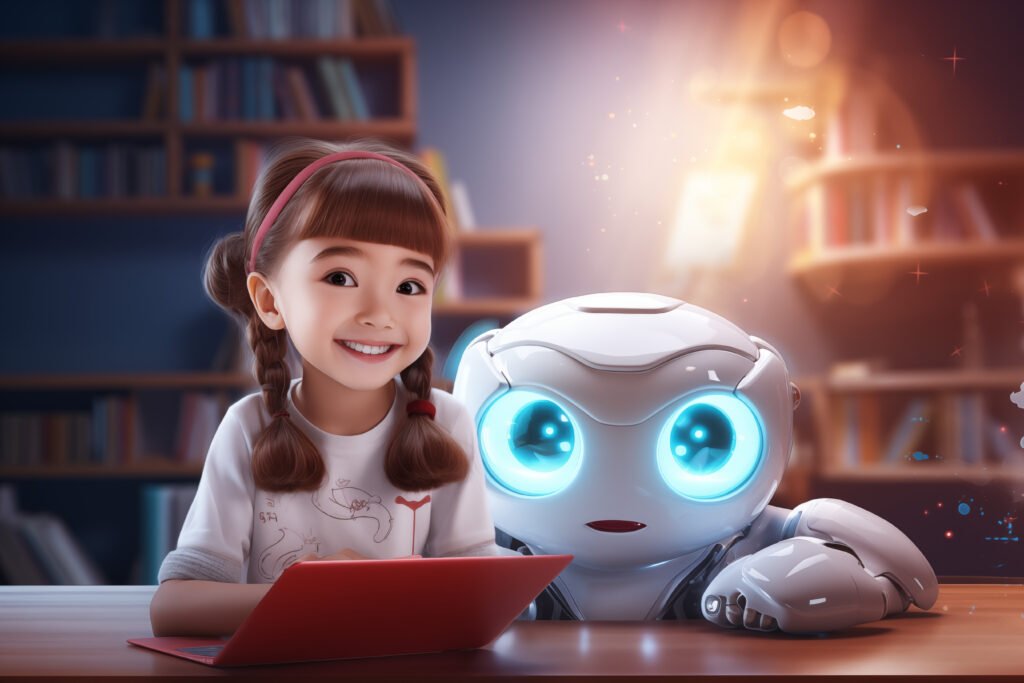
AI Learning. In an era of rapidly evolving technology, artificial intelligence (AI) is at the forefront, transforming various sectors, including education. Personalized Learning Experience One of the most significant advantages of AI in education is its ability to provide personalized learning experiences. Traditional classroom settings often struggle to accommodate students’ diverse learning paces and styles. AI-driven educational tools can assess your child’s learning patterns, strengths, and areas for improvement, tailoring lessons to fit their needs. This personalized approach ensures that your child receives the right level of challenge and support, fostering a deeper understanding and retention of knowledge. Intelligent Tutoring Systems Intelligent tutoring systems (ITS) are AI-powered platforms designed to provide one-on-one tutoring to students. These systems use advanced algorithms to adapt to your child’s learning pace, offering instant feedback and guidance. ITS can identify when a student struggles with a particular concept and provide additional resources or explanations to help them grasp the material. This targeted support can significantly enhance your child’s learning experience, making it more interactive and practical. Enhanced Engagement and Motivation Engaging students is a critical component of effective learning. AI can enhance engagement by incorporating interactive and gamified elements into learning. Educational games, virtual reality (VR) experiences, and augmented reality (AR) applications powered by AI can make learning fun and exciting. These tools capture your child’s interest and encourage active participation and critical thinking, making the learning process more enjoyable and motivating. Real-Time Progress Monitoring AI technology allows for real-time monitoring of your child’s progress. Through continuous assessment and data analysis, AI systems can track your child’s performance and provide detailed insights into their learning journey. This real-time feedback enables parents and educators to identify areas where the child may need additional support or enrichment. By addressing learning gaps promptly, AI helps ensure that your child stays on track and achieves their academic goals. Accessibility and Inclusivity AI has the potential to make education more accessible and inclusive for all children, regardless of their abilities or backgrounds. AI-powered tools can assist children with disabilities by providing customized learning aids and resources. For example, speech recognition software can help children with speech impairments, while text-to-speech applications can assist those with reading difficulties. By breaking down barriers to learning, AI ensures that every child has the opportunity to succeed. Preparing for the Future Incorporating AI into your child’s education is not just about enhancing their current learning experience; it’s also about preparing them for the future. The demand for AI-related skills is rising as AI continues to revolutionize various industries. By familiarizing your child with AI technology and fostering an early interest in STEM (Science, Technology, Engineering, and Mathematics), you equip them with the skills and knowledge needed to thrive in a technology-driven world. Conclusion AI is reshaping the education landscape, offering innovative solutions to personalize, engage, and support your child’s learning journey. As specialists in the field, we are excited about the endless possibilities AI brings to education. By embracing AI technology, you can unlock your child’s full potential, setting them on a path to academic success and future readiness. Invest in AI-powered learning tools today and witness the transformative impact on your child’s education. The future of learning is here, and AI powers it.
Quantum-Enhanced Generative AI: Revolutionizing the Future Across Multiple Domains

In the realm of technological advancements, quantum computing, and generative AI stand out as two of the most transformative forces of our time. Combined, these technologies promise to revolutionize industries and impact our daily lives in unprecedented ways. Here, we explore ten groundbreaking ways quantum-enhanced generative AI will change the world forever. 1. Accelerated Drug Discovery The pharmaceutical industry is on the brink of a revolution. Quantum-enhanced generative AI will significantly reduce the time and cost associated with drug discovery. By simulating molecular structures and interactions at an unparalleled speed, this technology enables the rapid identification of potential drug candidates. This advancement promises quicker delivery of new treatments and enhances the precision of clinical trials, potentially saving millions of lives. 2. Revolutionizing Material Science Imagine materials more robust than steel yet lighter than aluminum. Quantum-enhanced AI is set to make this a reality. By analyzing and predicting the properties of new materials, quantum computing accelerates the discovery process. This will lead to innovations in various fields, from aerospace to electronics, by providing materials with exceptional properties tailored to specific needs. 3. Optimized Financial Modeling The finance industry is poised to benefit enormously from quantum-enhanced AI. This technology offers improved risk assessment, portfolio optimization, and fraud detection. Financial institutions can make better decisions, enhance their services, and achieve excellent financial stability with more accurate predictive models. The impact on global markets could be profound, leading to more robust economic systems. 4. Transforming Climate Modeling Climate change remains one of the most pressing challenges of our time. Quantum-enhanced AI can create more precise climate models, allowing for better predictions and practical strategies to combat climate change. By understanding complex environmental systems and predicting extreme weather events more accurately, this technology can guide policymakers in making informed decisions to protect our planet. 5. Advanced Cryptography Data security is paramount in the digital age. Quantum-enhanced AI poses both challenges and solutions for cryptography. While quantum computing has the potential to break current encryption methods, it also offers the development of new, more secure cryptographic techniques. This dual capability ensures that our data remains protected against increasingly sophisticated cyber threats. 6. Revolution in Healthcare Beyond drug discovery, quantum-enhanced AI is set to revolutionize healthcare in myriad ways. From personalized medicine to improved diagnostic tools, the technology will enable treatment plans tailored to individual genetic profiles. This customized approach promises better patient outcomes and a more efficient healthcare system. 7. Enhanced AI Capabilities Generative AI itself will experience significant advancements. Quantum computing will enhance machine learning algorithms, enabling AI to process and analyze vast datasets more efficiently and accurately. This improvement will unlock new possibilities in natural language processing, image recognition, and autonomous systems. 8. Improving Supply Chain Management Global supply chains are complex and often inefficient. Quantum-enhanced AI will optimize supply chains by predicting demand, improving logistics, and reducing waste. This will lead to more resilient and efficient supply networks, benefiting industries worldwide and ensuring that goods are delivered more reliably and sustainably. 9. Innovations in Energy Solutions The energy sector stands to gain immensely from quantum-enhanced AI. This technology will facilitate the development of more efficient renewable energy sources and storage solutions. By optimizing energy grids and improving the design of batteries, quantum-enhanced AI will play a crucial role in the transition to a sustainable energy future. 10. Ethical and Societal Implications Like any technological advancement, quantum-enhanced AI brings ethical considerations and societal impacts. Ensuring these advancements are used for the greater good is crucial. Addressing potential risks such as job displacement and data privacy concerns is essential. The ethical deployment of these technologies will determine their long-term success and acceptance. Conclusion Quantum-enhanced generative AI is not just a technological advancement but a paradigm shift. Its impact will be felt across multiple domains, from healthcare and material science to finance and energy. As specialists, we guide these technologies’ ethical development and deployment, ensuring they benefit society. The future, empowered by quantum-enhanced AI, holds immense promise, and we must harness it responsibly.
From Surveillance to Insights: Leveraging AI CCTV Analytics for Business Intelligence
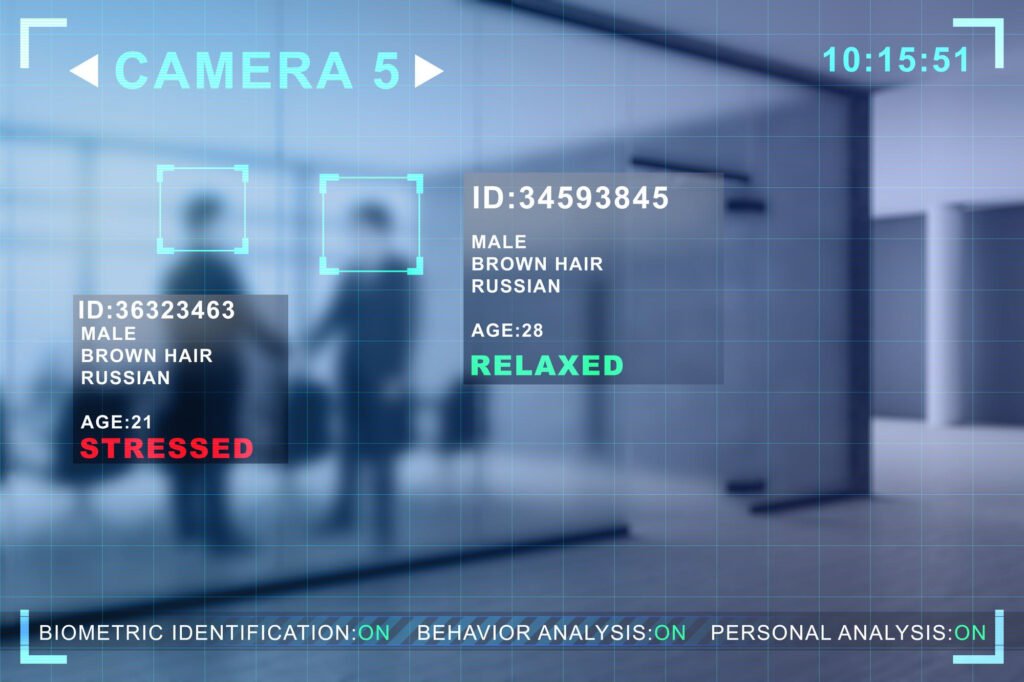
In today’s rapidly evolving technological landscape, businesses seek innovative ways to gain a competitive edge. One of the most promising advancements is using AI CCTV analytics, which extends beyond traditional security purposes to offer invaluable business intelligence. Unleashing the Power of AI CCTV Analytics AI CCTV analytics leverages advanced machine learning algorithms and computer vision to analyze video footage captured by surveillance cameras. Unlike traditional CCTV systems, which require human operators to monitor and interpret footage, AI-powered systems can autonomously process and analyze large volumes of data in real time. This capability transforms passive surveillance into an active tool for extracting actionable business insights. Informing Decision-Making Optimizing Operations Enhancing Customer Experiences Case Study: Retail Industry Consider a large retail chain that implemented AI CCTV analytics across its stores. By analyzing customer behavior and foot traffic patterns, the chain optimized store layouts and product placements, resulting in a 15% increase in sales. The AI system also detected frequent instances of shoplifting in specific areas, leading to targeted security measures that reduced theft by 20%. Furthermore, queue management analytics helped reduce average checkout times by 30%, significantly enhancing the overall customer experience. Conclusion AI CCTV analytics transforms businesses’ operations by providing deep insights beyond traditional security purposes. By leveraging these insights, businesses can make informed decisions, optimize operations, and deliver exceptional customer experiences. As AI technology advances, AI CCTV analytics’s potential applications and benefits will only grow, offering businesses unprecedented opportunities to thrive in a competitive market. Embracing AI CCTV analytics is not just about enhancing security; it’s about unlocking a wealth of business intelligence that can drive success and innovation in the modern business landscape.
How AI is Transforming the Sports Industry
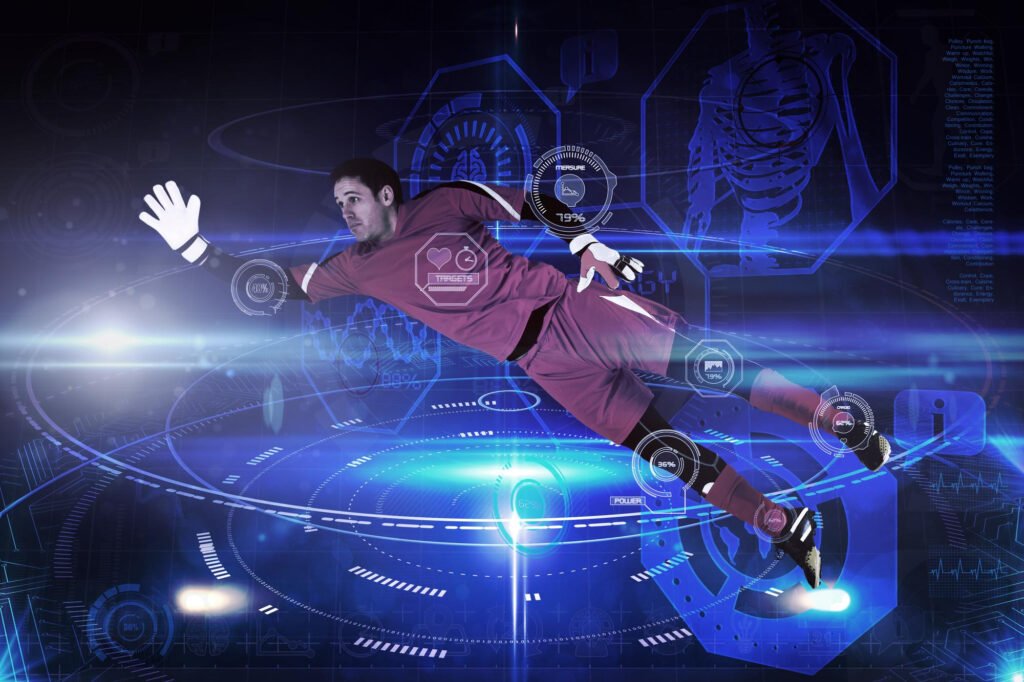
Artificial Intelligence (AI) is rapidly transforming industries worldwide, and the sports sector is no exception. From enhancing athlete performance to revolutionizing fan engagement, AI is making significant strides in how sports are played, managed, and experienced. In 2025, the integration of AI in the sports industry is more pronounced than ever, promising to reshape the future of sports in unprecedented ways. Enhancing Athlete Performance One of the most impactful applications of AI in sports is improving athlete performance. AI-driven analytics tools can now analyze vast amounts of data collected from wearable devices, cameras, and other sensors. These tools provide coaches and athletes with detailed insights into performance metrics such as speed, agility, and endurance. For example, football clubs like Manchester City and FC Barcelona use AI to track player movements during training and matches. This data is then analyzed to identify patterns, strengths, and areas for improvement. AI algorithms can also predict the risk of injuries by analyzing an athlete’s biomechanics and workload, enabling preemptive measures to prevent injuries. Revolutionizing Game Strategy AI is also transforming how teams develop and implement game strategies. Advanced AI systems can analyze an opponent’s past performances, tactics, and player behavior to devise optimal game plans. These insights help coaches make data-driven decisions during matches, increasing the chances of success. Basketball teams like the Golden State Warriors are leveraging AI to analyze game footage and opponent strategies. This analysis helps identify weaknesses and develop counter-strategies, providing a competitive edge on the court. AI also simulates various game scenarios, allowing teams to prepare for different possible outcomes. Enhancing Fan Engagement Fan engagement is a critical aspect of the sports industry, and AI is pivotal in enhancing the fan experience. AI-powered chatbots and virtual assistants are commonplace on sports websites and mobile apps, providing fans with real-time information, personalized content, and interactive experiences. For instance, NBA teams use AI to deliver personalized content to fans based on their preferences and past interactions. AI algorithms analyze fan behavior and tailor content, such as highlight reels, player interviews, and game statistics, to individual tastes. This level of personalization enhances fan loyalty and engagement. Improving Sports Broadcasting AI is revolutionizing sports broadcasting by automating and enhancing various aspects of production. AI-driven cameras and software can automatically capture and highlight key moments in a game, reducing the need for extensive human intervention. This technology ensures that fans never miss a crucial play, whether they are watching live or on-demand. Companies like IBM and Intel are at the forefront of integrating AI into sports broadcasting. AI-powered systems can analyze game footage in real time, providing instant replays, slow-motion analysis, and augmented reality (AR) features. These enhancements make the viewing experience more immersive and engaging for fans. Advancing Sports Analytics Sports analytics has come a long way with the advent of AI. Teams and organizations can now analyze data more comprehensively and accurately, leading to better decision-making and improved performance. AI algorithms can process large datasets quickly, providing previously unattainable insights. Baseball teams like the Boston Red Sox use AI to analyze player statistics and performance metrics. This data-driven approach helps scout new talent, make strategic decisions, and optimize player lineups. AI’s ability to analyze complex data sets transforms how sports analytics are conducted, leading to more informed and effective strategies. Enhancing Training and Rehabilitation AI is also making significant contributions to athlete training and rehabilitation. AI-powered systems can create personalized training programs based on an athlete’s unique needs and goals. Based on performance data, these programs can be adjusted in real-time, ensuring optimal training efficiency. In rehabilitation, AI-driven tools are helping injured athletes recover more quickly and effectively. AI can analyze an athlete’s movement patterns and provide tailored rehabilitation exercises. These tools can also monitor progress and adjust the rehabilitation plan, leading to better outcomes. Conclusion Integrating AI in the sports industry transforms how sports are played, managed, and experienced. From enhancing athlete performance and revolutionizing game strategies to improving fan engagement and advancing sports analytics, AI is profoundly impacting every aspect of the sports world. As technology continues to evolve, AI’s role in sports will only grow, promising even more innovative and efficient solutions. Thanks to AI’s transformative power, the future of sports looks brighter and more exciting than ever for athletes, teams, and fans alike.
AGI and Transportation: The Future of Mobility

In the ever-evolving landscape of technology, Artificial General Intelligence (AGI) stands at the forefront of transformative potential. One of the most promising fields poised for revolution through AGI is transportation. The Current Landscape of Transportation Today’s transportation systems are intricate networks comprising various modes—cars, buses, trains, airplanes, and more. While innovations such as autonomous vehicles and intelligent traffic management systems have already begun to transform these networks, the integration of AGI promises to take these advancements to an entirely new level. The Role of AGI in Transportation Autonomous Vehicles Beyond Self-Driving Cars: Autonomous vehicles rely heavily on narrow AI and are proficient at lane-keeping and obstacle-detection tasks. With its ability to understand, learn, and adapt across various tasks, AGI can drive more safely and efficiently, adapting to unforeseen situations with human-like judgment. Fleet Management: AGI can optimize entire fleets of autonomous vehicles, dynamically adjusting routes, schedules, and maintenance based on real-time data and predictive analytics. Smart Traffic Management Dynamic Traffic Control: AGI can manage city-wide traffic flows, reducing congestion and emissions. By analyzing patterns and learning from past events, AGI systems can predict and mitigate traffic jams before they occur. Emergency Response: In case of accidents or natural disasters, AGI can coordinate emergency vehicles, reroute traffic, and provide real-time updates to ensure the fastest and safest responses. Public Transportation Enhanced Coordination: AGI can seamlessly integrate various modes of public transportation, ensuring smooth transitions and minimizing wait times. This includes optimizing schedules based on passenger demand and real-time conditions. Personalized Services: By understanding individual passenger preferences and habits, AGI can offer tailored recommendations and services, enhancing the overall travel experience. Logistics and Freight Optimized Routing: For logistics and freight, AGI can plan and adjust routes in real-time, considering weather, traffic, and road conditions, significantly improving efficiency and reducing costs. Supply Chain Management: AGI can oversee entire supply chains, predicting demand fluctuations, optimizing inventory levels, and ensuring timely deliveries. Addressing Challenges While the potential benefits of AGI in transportation are vast, several challenges must be addressed: The Road Ahead The integration of AGI into transportation systems represents a paradigm shift, promising a future where mobility is safer, more efficient, and more personalized. Continuous research, interdisciplinary collaboration, and proactive policy-making will be essential as we progress to harness AGI’s full potential. By addressing the challenges and leveraging AGI’s capabilities, we can pave the way for a future where transportation systems meet today’s demands and anticipate and adapt to tomorrow’s needs. The journey toward this future is exciting and daunting, and as an AI scientist, I am committed to contributing to this transformative endeavor. In conclusion, AGI holds the key to revolutionizing transportation, offering solutions that were once the realm of science fiction. As we navigate this journey, the synergy between human ingenuity and artificial intelligence will drive us toward a new era of mobility marked by unprecedented efficiency, safety, and convenience.
Smart Mirrors: The Future of Personal Grooming with AI
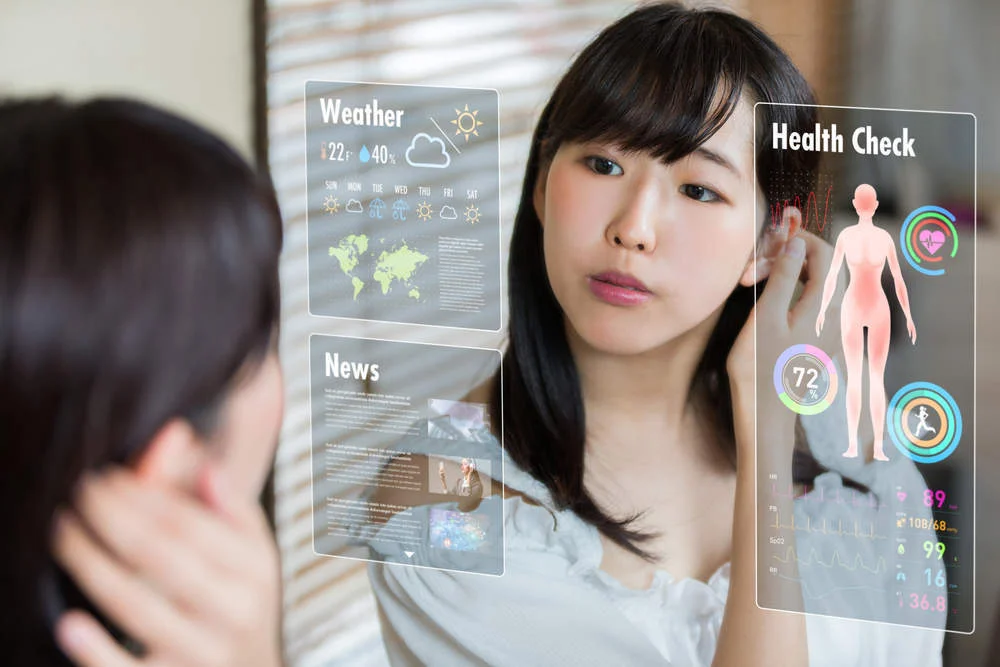
Personal grooming is no exception in an era where technology transforms every aspect of our lives. Enter smart mirrors—innovative devices revolutionizing how we approach our daily beauty and grooming routines. Equipped with artificial intelligence (AI), these mirrors are not just reflective surfaces but powerful tools that offer a range of features designed to enhance and simplify our grooming experience. What are Smart Mirrors? Smart mirrors are interactive devices that incorporate AI, touchscreens, and various sensors to provide users with more than just a reflection. These mirrors can display information, offer personalized recommendations, and connect to other smart home devices. The integration of AI allows these mirrors to learn from user habits and preferences, making them increasingly effective over time. Key Features of AI-Powered Smart Mirrors Virtual Try-Ons: One of the standout features of smart mirrors is their ability to allow virtual try-ons. Whether it’s makeup, hairstyles, or outfits, AI can superimpose different looks on your reflection, giving you a realistic preview of how various products will appear on you. This feature is handy for experimenting with new styles without any commitment. Skin Analysis: Smart mirrors can analyze your skin’s condition in real-time. Using advanced imaging and AI algorithms, these mirrors can detect issues like acne, dryness, and wrinkles. They can then provide tailored skincare recommendations, suggest products, and even track your skin’s progress. Personalized Beauty Tips: Based on the analysis of your skin and the data collected from your routine, smart mirrors can offer customized beauty tips and tutorials. Whether it’s advice on achieving a particular look or step-by-step makeup instructions, the AI provides guidance explicitly tailored to your needs. Health Monitoring: Beyond beauty, some smart mirrors have health monitoring features. They can measure vital signs such as heart rate and track fitness progress. These mirrors can offer comprehensive health insights and suggestions by integrating with fitness apps and wearable devices. Voice and Touch Control: Smart mirrors are incredibly user-friendly, with voice and touch control capabilities. You can ask your mirror to play music, display the weather, or even read the news while you get ready in the morning. This hands-free convenience makes multitasking more accessible than ever. Integration with Smart Home Ecosystem: Smart mirrors can be seamlessly integrated into your existing smart home ecosystem. They can sync with devices like bright lights, thermostats, and security systems, creating a cohesive and efficient environment. For example, you can adjust the lighting to match the time of day or your grooming needs, all from your mirror. The Benefits of Smart Mirrors Efficiency: Smart mirrors consolidate multiple functions into one device, saving time and streamlining your grooming routine. The ability to receive real-time feedback and suggestions means you can make quicker, more informed decisions. Customization: The AI capabilities of smart mirrors ensure a personalized experience. Over time, the mirror learns your preferences and habits, continually improving the accuracy and relevance of its recommendations. Cost-Effectiveness: Although the initial investment in a smart mirror might be higher, the long-term benefits can outweigh the costs. By providing precise product recommendations and reducing the trial-and-error associated with beauty products, smart mirrors can help you save money. Enhanced Self-Care: The detailed skin analysis and health monitoring features encourage a more proactive approach to self-care. Smart mirrors inform you about your skin and overall health by promoting better grooming and wellness practices. The Future of Smart Mirrors As AI technology advances, smart mirrors’ capabilities will only expand. We can expect even more sophisticated skin analysis, deeper integration with other smart devices, and enhanced virtual try-on experiences. The future may also see the development of smart mirrors tailored to specific needs, such as mirrors designed for professional use in salons and spas. In conclusion, smart mirrors represent a significant leap forward in personal grooming. Combining AI with innovative design offers these devices convenience, customization, and efficiency that traditional mirrors cannot match. As we embrace this new technology, our daily routines will become more streamlined, our self-care will be more informed, and our grooming experiences will be more enjoyable. The future of personal grooming is indeed bright, and it’s reflected right back at us through the intelligent surface of a smart mirror.